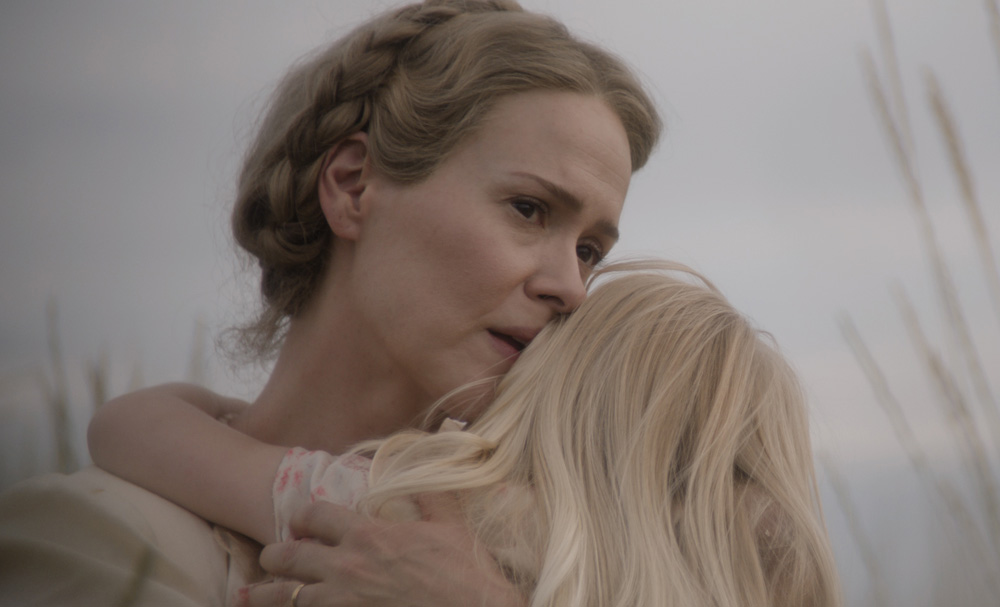If Margaret (Sarah Paulson) needed any reminder of how difficult it is to keep anything out of her house in “Hold Your Breath,” with the doors of her home in the Oklahoma panhandle bolted shut at the height of the Dust Bowl in 1933, the typically hopeful sight of sunlight that peeks in between the planks of the wooden panelling anywhere on her farm can only bring despair. Watching over daughters Rose (Amiah Miller) and Ollie (Alona Jane Robbins), the latter of whom is deaf, while her husband has left presumably to send money back home from wherever he can find work during the Great Depression, Margaret can only prevent so much from outside coming in, so frustrated by the dirt that she doesn’t have the time to notice other potentially pernicious elements that have entered when Rose and Ollie begin to read from a book of ghost tales, believing their bad fortune of late may have something to do with “The Grey Man.”
It’s an inspired setting for an auspicious debut from Karrie Crouse and Will Joines, who have been working towards “Hold Your Breath” for the better part of a decade and deliver a force of nature for their troubles, observing how a mother’s overprotection could end up bringing some of her worst fears to her doorstep. There are threats in every direction, particularly when a tornado could come through and pick up the family’s home in one fell swoop. But Crouse and Joines suggest the one to truly fear may be coming from within when in a community largely left behind by men in search of economic opportunity elsewhere while women held down the homestead, Margaret has only a cow to lean on that increasingly can’t be depended upon to produce milk given its poor health and a knitting circle too concerned with their own troubles to be compassionate towards hers, leaving her to be excessively strict with her daughters and in a sign of potentially poor judgment, allowing a God-fearing stranger (Ebon Moss Bachrach) to stay in the barn after greeting him at gunpoint.
Anchored by a typically strong turn from Paulson, Crouse and Joines give their entire cast a juicy script to work from when Margaret’s authority starts to be questioned, accompanied by muscular camerawork that makes the small town feel like the center of the world with this one family teetering on the edge. After premiering recently at the Toronto Film Festival, “Hold Your Breath” is sweeping into homes everywhere this week on Hulu, just in time for the spooky season and the co-directors spoke about braving the elements themselves during an inclement shoot in New Mexico, finding new ways to unsettle modern audiences with period details and watching a real family coalesce on set.
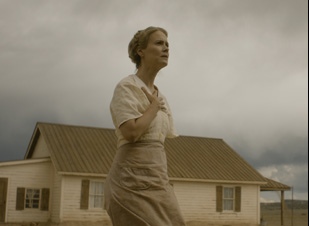
Karrie Crouse: We watched the Ken Burns documentary ”The Dust Bowl” and growing up you read “Grapes of Wrath,” so you’re familiar with this time in American history, but watching the film [from the era] and seeing the different ways the dust could be threatening – how it could blot out the sun, that it could chase you down, that it could worm its way in through the cracks and you could never be rid of it, it started to feel like a really interesting setting for a genre film to play with something psychological and we thought, “Well, we haven’t seen that before.”
Were there period details besides the specific site you could lean into that could make this more interesting? For instance, I’ve heard the sign language actually was more demonstrative being era appropriate.
Karrie Crouse: Yeah, I had three deaf great aunts who came of age during this time and what I found really interesting is, unless you went to a specific deaf school, a lot of the sign language people used was cobbled together. It wasn’t quite so unified at the time, so that was an interesting period detail for us. But aside from that, playing with the actual ways that people dealt with the dust in the dust bowl, having to tie themselves to the house, to mask, to patch the walls – it all felt really compelling visually for what was happening thematically with this mother trying to keep her children safe, almost on these umbilical cords [with twine] and seal them up in a little womb with herself.
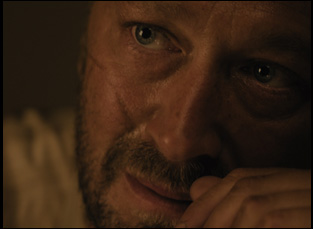
Will Joines: Yeah, Zoe White, the [director of photography] went to film school with Carrie and I, where we all met back in the day and we worked with her on a number of short projects before this, so the three of us have really developed a certain kind of taste and style that we all really like. And that combo of light and dark that you’re talking about obviously carries with it a very clear thematic [element] but also allows us to take a somewhat pedestrian setting, which is just this family’s barn, and somehow imbue it with this strange, unsettling sense of dread as this new threat is coming in.
Karrie Crouse: And the production designer Tim Grimes is incredible. I remember him very specifically saying, “What size cracks do we want these to be?” And it was a way that having those little cracks was a way where light comes in, but it’s also where dust comes in and that was also something visually that could tie into the sound because if you’ve ever been in an old barn with cracks, it whistles through the cracks and there is this almost monstrous sound to the wind howling in.
Will Joines: One of the things we said right from the jump is we were making a movie that is set in the 1930s, but we didn’t want to make a period picture because when we think period picture, we think something that is stiff and overly reverential to its time period and feel stuck in the past. We were very much going to tell a modern story that happens to be set in the 1930s and that led to this discussion of how the image design and the camera work could feel on one hand somewhat classical, but also have these modern flourishes that would pretty much plant it in the here and now.
Karrie Crouse: We always talked about Margaret’s psychology, that when she feels trapped inside and she’s fixating on details, really getting in her head and getting close [with the camera], but then when she’s outside, she’s adrift in this ocean of dust and overtaken by this menacing landscape. A lot of [the camerawork] was really tied to how Margaret is perceiving this moment. Is it an unbroken period of time that these threats are appearing? We always chatted with Zoe about where Margaret is to convey that visually.
[For instance] there are some sleepwalking sequences, and we really just thought about how if you fall asleep and don’t know you’ve fallen asleep, you’re experiencing time in a different way. So it was just trying to be incredibly subjective about how we shot those sequences, then also how we cut them together so that it feels like how Margaret perceives the situation.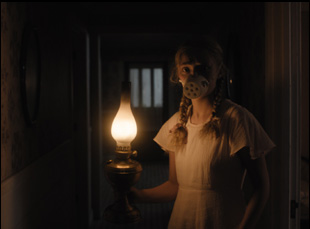
Will Joines: She is Sarah Paulson, so her reputation precedes her as somebody whose talent is just sky high. And she would so wonderfully, inventively and surprisingly on a shot by shot, scene by scene, day by day basis add so much to the character of Margaret, from where she starts with this sense of strength and at least tenuous control over the situation to this churning debate within her as she is being like pulled apart at the seams as the movie goes along. She was constantly adding things to it that just surprised and delighted us and just elevated the film in every possible way.
Karrie Crouse: She’s also just a really hard worker and glutton for punishment. [laughs] She was always really eager to have wind and dust and things to actually be interacting with. And there were times where we really thought, “Well, she can’t deal with more of this.” And she would say, “Actually, I want more dust, more wind in my face.”
Incredible. What was it like to see the family at the center of this coalesce?
Will Joines: It was so much fun shooting especially the early scenes where [Margaret’s] bathing them, because I think both as characters and as the human beings who are working as performers, they really had an affection among the three of them that was so palpable. I remember being so delighted and moved. For instance, sometimes when we were shooting some of the bedroom scenes, the two daughters and Margaret would still be in the bed, just resting and teasing and playing with each other while we were changing [camera] setups, so they really started to feel like this loving family unit, on screen and off.
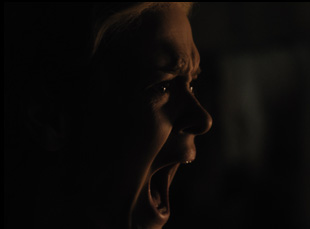
Karrie Crouse: It was somewhat more challenging than doing a short film.
Will Joines: Yeah, it’s worth it, but shooting on location could be punishing at times where we were having to deal with actual lightning strikes and dust storms. But scene by scene, you have more toys…
Karrie Crouse: You’re still approaching the work the same way, coming from a character psychology and story perspective, which is how you would approach any scene anywhere.
Could the inclement weather actually be helpful?
Karrie Crouse: It certainly was not. [laughs]
Will Joines: Out in the grasslands of New Mexico, there were endless lightning strikes, which would stop us. We got shut down by an actual dust storm.
Karrie Crouse: Rain and mud and all kinds of fun stuff.
Will Joines: Unlike the real dust bowl, it rained on our dust bowl, which makes it a mud bowl. but the challenges were worth it.
It seems so. What’s it like putting out into the world now?
Karrie Crouse: Probably just to keep along the theme of motherhood, it’s exciting, but very vulnerable. You’re putting this thing that you really care about out into the world and hoping people engage with it and love it, but knowing it’s out of your hands now. You can’t protect it anymore.
“Hold Your Breath” will be available on Hulu on October 3rd.




